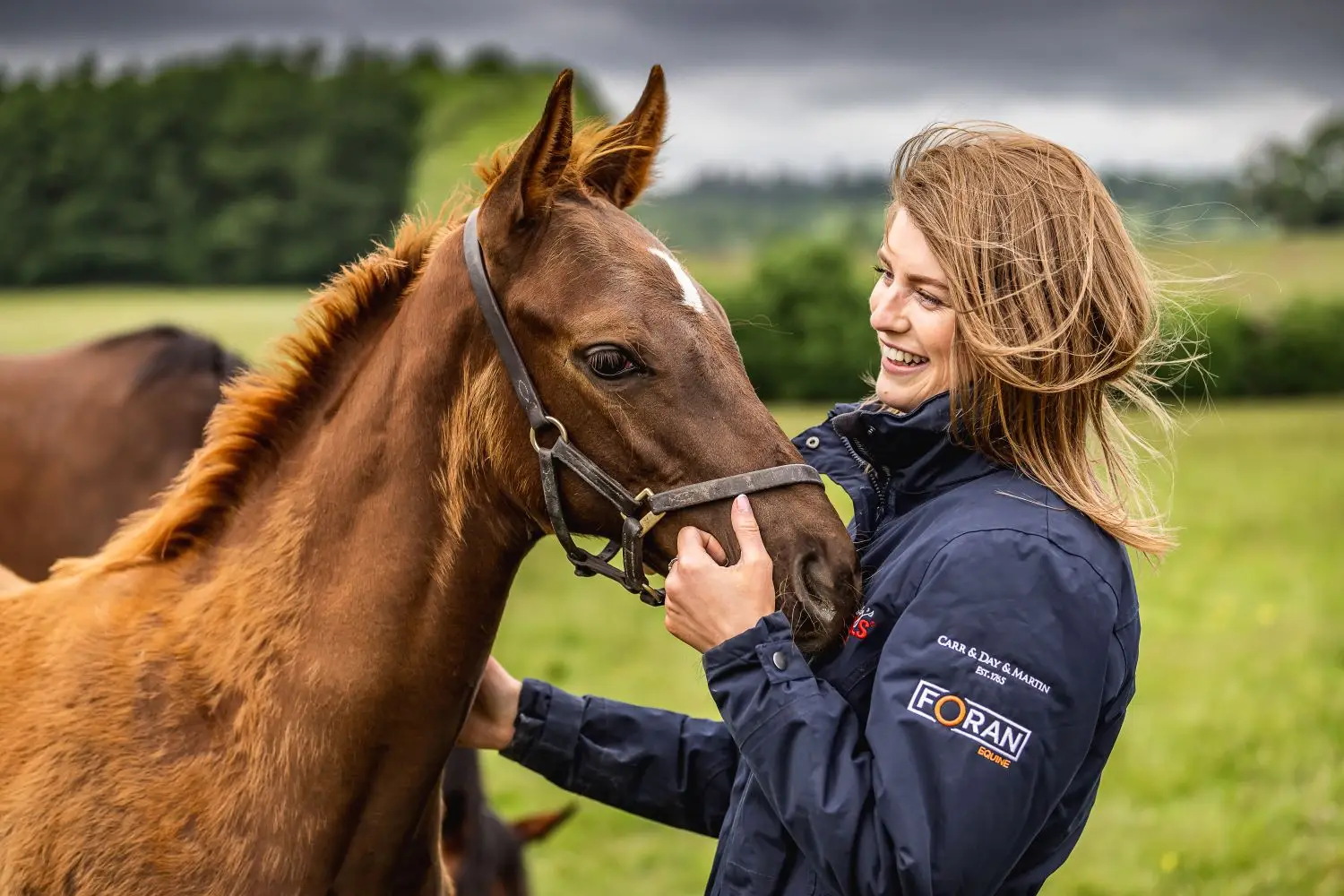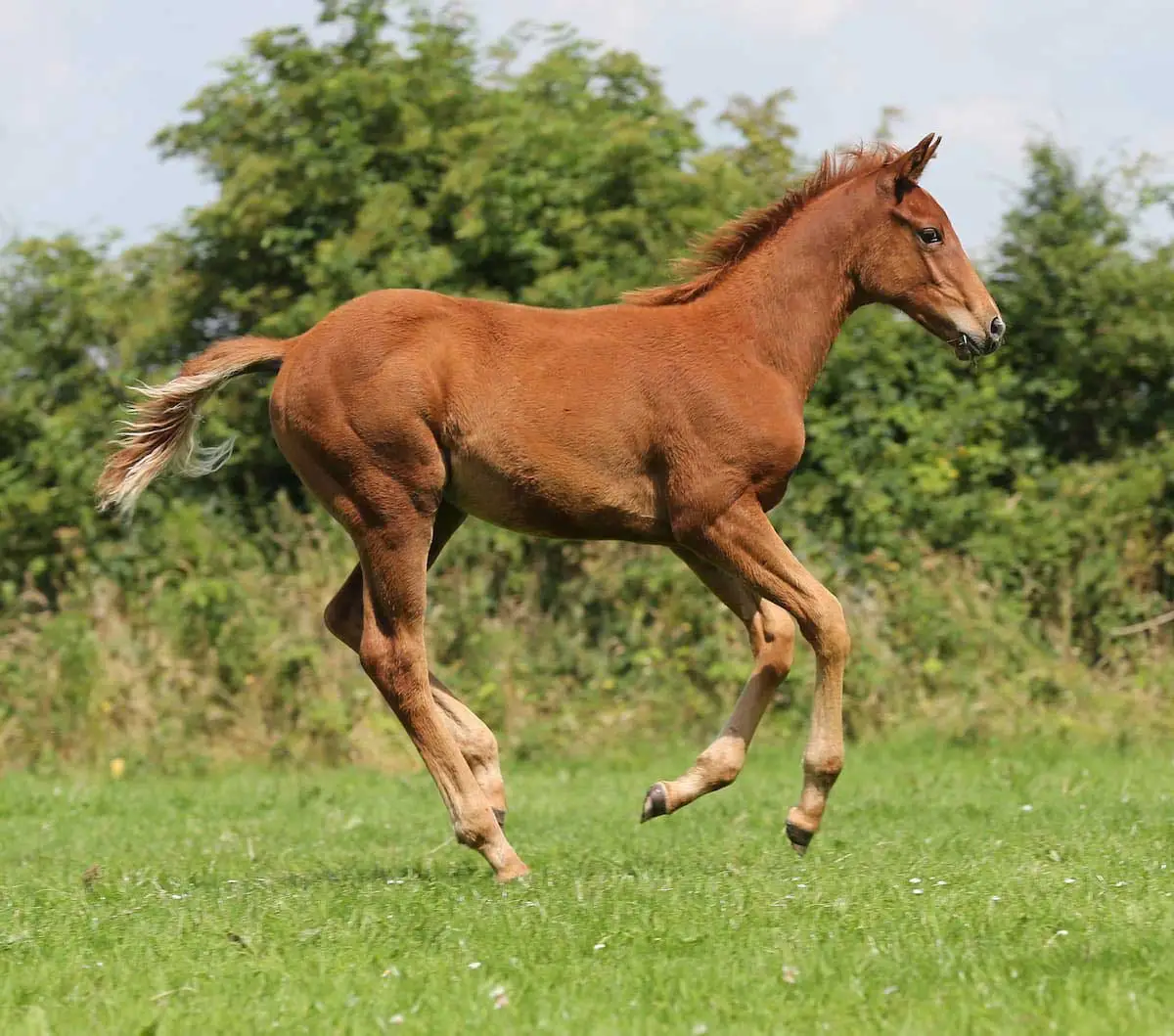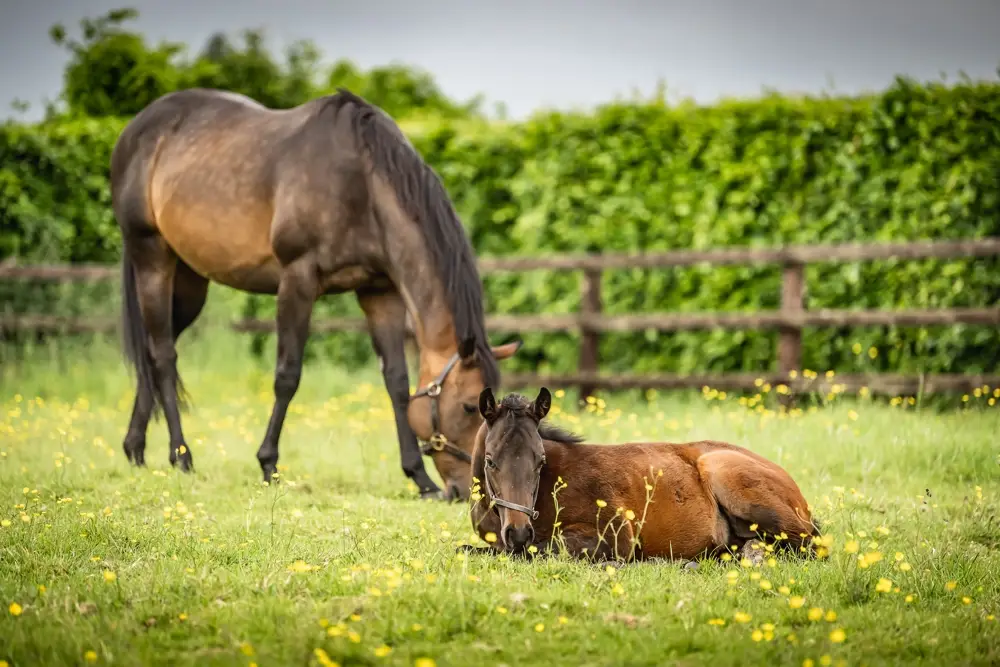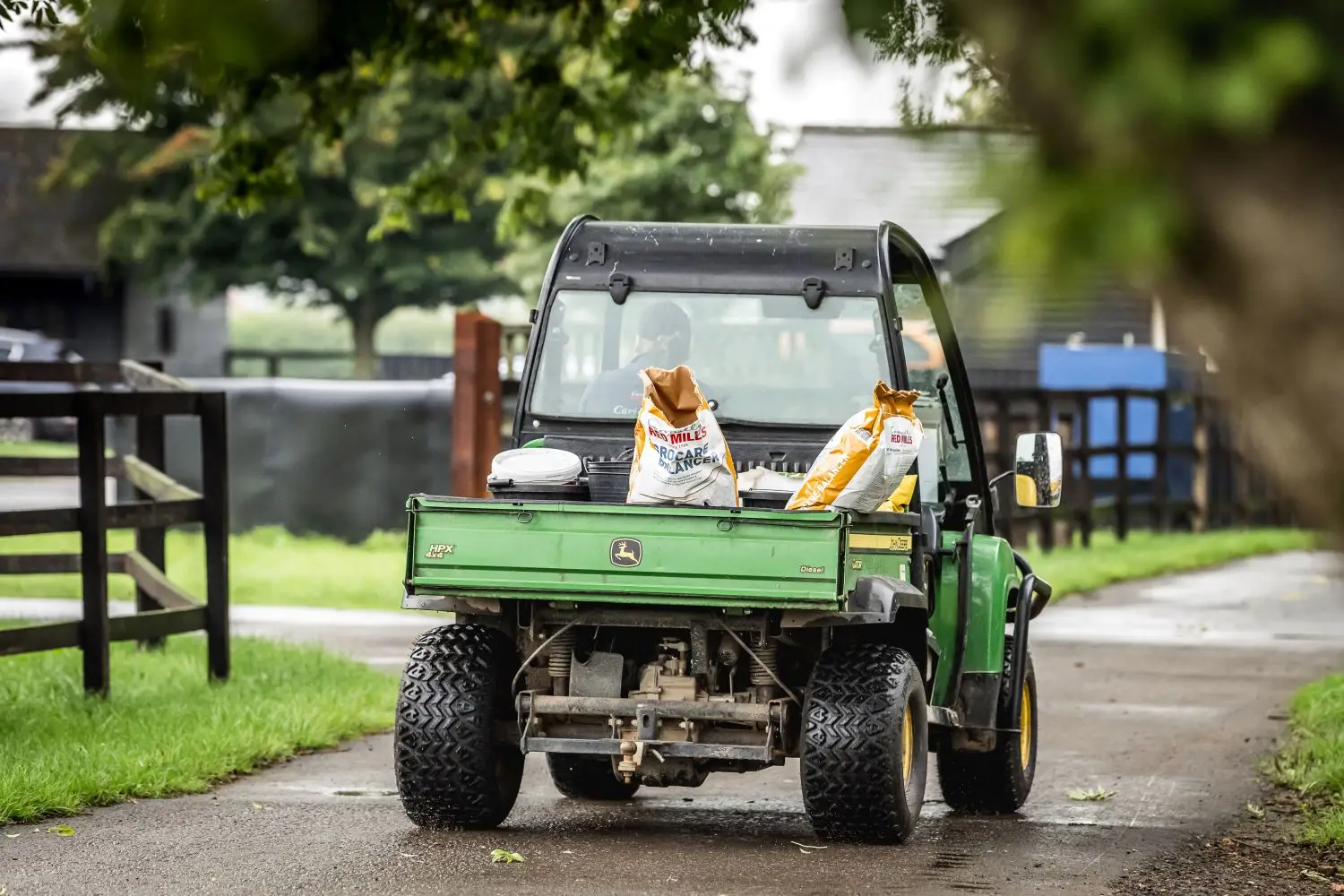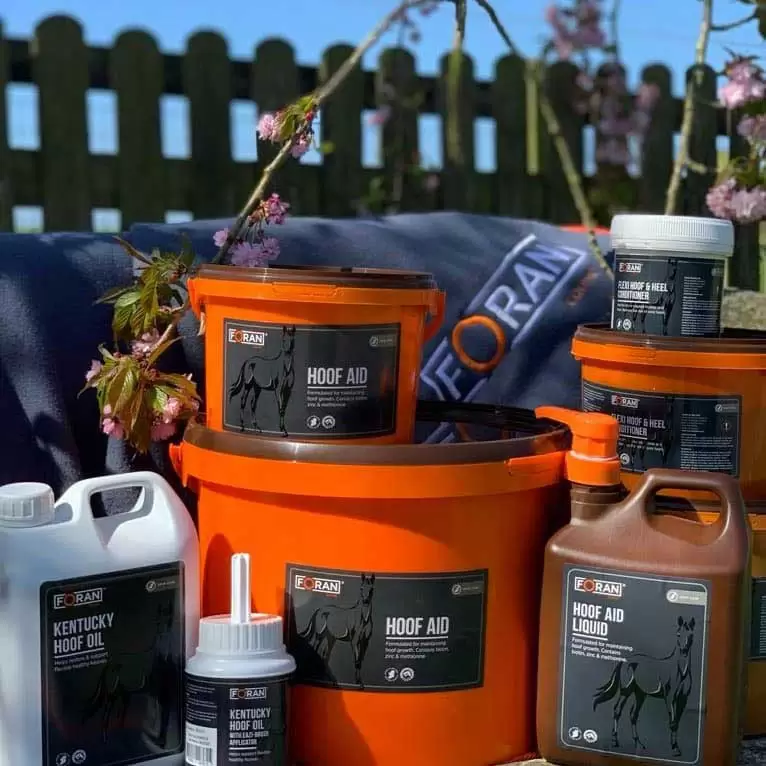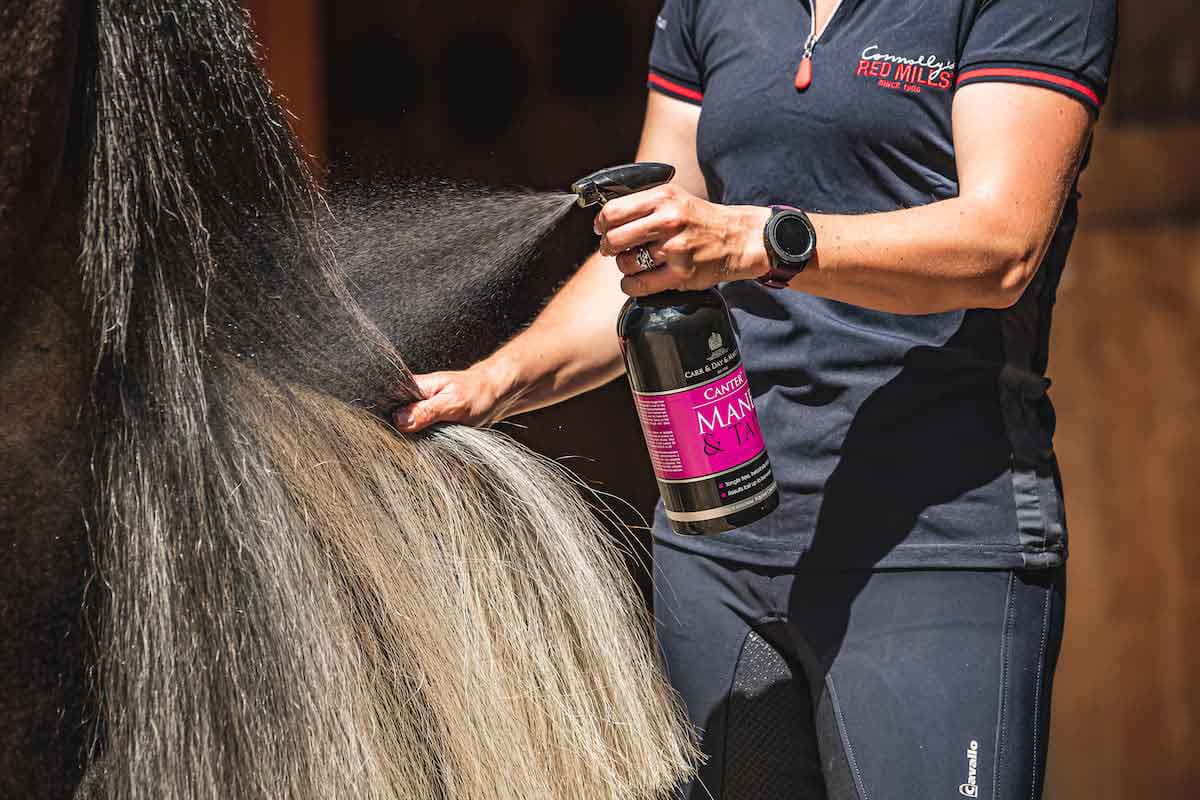What the 3 key factors that influence bone development in youngstock?
Nutrition, genetics and management (e.g. exercise) all play an integral role in determining growth rates and bone strength in youngstock. The interplay of these three factors is complex and playing catch up with any aspect of development is undesirable. From gestation to maturity, managing nutritional demands is instrumental in determining skeletal health and future performance. It is never too early to start thinking about optimising the quality and strength of the young equine skeletal system. Bone health is particularly important to consider during the sales preparation period as an increase in exercise and weight gain can place additional stress on bones and joints. Indeed, it is not uncommon for various skeletal problems to arise during sales preparation ultimately affecting the value of sales stock.
An explanation of the development of bones of foals in utero
Owners and breeders know the importance of the development of long bones and the impact they will have on soundness and ultimately the impact on a horse’s racing potential is substantial. When in utero, the skeleton is developing as a cartilage model for mature bone. Conversion of the cartilage to bone occurs initially within a central area of ossification, known as the diaphysis, and then at each end of the bone (e.g. the epiphysis). Growth plates (physis) are an area of proliferating cells and an expanding cartilage matrix, which is eventually mineralised and will become mature bone at different stages as the skeleton matures. These growth plates are a common site for problems to develop. Although bone is modelled during growth, it continually undergoes remodelling when faced with mechanical stress (e.g. exercise). It is common for issues to occur during sales prep and the early stages of training as the skeleton attempts to adapt to the demands of increased exercise.


Bone mineral content maturity coupled with skeletal growth, muscle mass and weight is important to consider for skeletal soundness.
Bone mineral content (BMC) is integral to skeletal strength and despite its importance, it lags behind skeletal height. At birth, the foal has only 17% of its total BMC, rising rapidly to 68% at six months and 76% by 12 months. The total mature BMC is often not reached until the horse is six years of age. By comparison, a horse can reach up to 94% of its mature height and 65% of mature weight by 12 months.
As the youngster grows, the increase in bone size and bodyweight is coupled with increasing bone mineralization, muscle mass, and the maturation of tendons, ligaments, and cartilage. The delicate balance between skeletal development, muscle mass, and bodyweight in these early years makes it one of the most common times for skeletal abnormalities to occur. Such abnormalities are classified as Developmental Orthopaedic Disorders (DODs). Two commonly seen DOD conditions affecting youngstock are:
- Physitis or epiphysitis in foals: effusion around the knee and/or fetlocks, with or without associated pain, radiographs may be necessary. Treatment is often conservative and nutrition will play a key role.
- Osteochondrosis Dessicans (OCD): means the process of endochondral ossification is disrupted and damage to the cartilage occurs, the underlying bone is then vulnerable to further injury. Flaps of cartilage can become loose (dissected) and these will cause pain and inflammation around the affected joint as a result of excess fluid in the synovial space.
DOD is not caused by just nutrition as certain breeds, genetics or trauma are factors for DOD too.
The aetiology of DOD is complicated and there is no one causative factor. In fact, it is a combination of different factors, and not all are related to nutrition. Genetics appears to play a role in certain DOD. For example, OCD has been found to have low to high heritability levels depending on the breed and conditions of the study. Genetics will inevitably predetermine how predisposed bone can be to nutritional factors, for example, some breeds and individuals seem vulnerable to increased growth rates. Another non-nutritional cause of DODs is trauma (e.g. exercising on hard ground) which can result in damage to the growth plates.


Attention to nutrition and adapting during key periods of growth or stress is the best strategy
There are many controversial, and at times conflicting, reports on how best to feed youngstock to optimise skeletal health, and ultimately a balanced approach is always best. Energy and protein requirements are key and providing these in a balanced way, allowing for consistent and steady growth rates, is essential. The provision of key nutrients, including vitamins and minerals, is particularly important during high-risk periods such as weaning and sales preparation. Periods of excessive or reduced growth rates, as well as dietary deficiencies and/or imbalances, once identified, must be corrected in a controlled way with help and advice from vets and a qualified nutritionist
Closely monitoring rapid growth periods and adjusting feed accordingly is best strategy
Energy; rapid growth has been suggested as a major risk factor in certain DODs. This is because an over-supply of calories creates a mismatch between the rate of body weight increase, skeletal growth and micronutrient intake. Thoroughbreds are at an increased risk of DOD due to a genetic predisposition for faster growth rates compared to other breeds, therefore careful monitoring of growth rates is essential. Using a weighbridge is a great method of keeping accurate records of average daily weight gain (ADG). Further to this, the implementation of body condition scoring (BCS) will prove invaluable in noticing subtle changes before they become significant ones, helping to avoid DODs and “overtopping”. Horses that suffer from epiphysitis following rapid weight gain will likely need to be stood in. Ensure the diet remains balanced for this period by using the recommended volume of Grocare Balancer to support bone development without the added calories.


Structural sources of carbohydrates are best for digestive and temperament balance.
Carbohydrates and fats are primarily responsible for providing energy/calories. Carbohydrates can be divided into two general categories; non-structural carbohydrate (NSC) such as starch and sugar, and structural carbohydrates such as hemi-cellulose and cellulose. The latter is provided mainly from fibre and is fermented by beneficial bacteria in the hind-gut. A lack of structural carbohydrates in the diet can lead to issues such as equine gastric ulceration syndrome (EGUS), hindgut acidosis, colonic ulceration, colic and the development of certain stereotypical behaviours.
Feeding high levels of non structured carbohydrates such as cereal grains can lead to gastric issues & risk of DOD.
Cereal grains are high in NSCs (Non-structured carbohydrates), which are digested in the small intestine by enzymes. During this process NSCs are broken down into smaller individual sugar molecules such as glucose, which are then absorbed into the blood stream. This increase in blood sugar is closely followed by a release of insulin from the pancreas to facilitate the uptake of glucose into the body’s cells to be utilised as energy. The rise in blood glucose and insulin due to the digestion of NSCs is known as the glycaemic and insulinemic response (GR/IR). Feeding high levels of NSCs in a single meal can result in gastrointestinal disturbances such as colic, as a result of undigested starch entering the hindgut and undergoing fermentation. In recent years there has been concern that feeding excessive levels of starch in a single meal resulting in an extreme GR and IR, may be linked to DOD


High starch (non structured feeds) lead to high GR which can compromise bone quality.
Endocrine/Hormonal influences; high GR (glyacemic response)and the resulting IR (insulinemic response) can influence growth factor/ hormones such as T4 and IGF1, both of which are involved in cartilage formation. Therefore, it has been proposed that diets causing a large GR can negatively affect bone quality in genetically susceptible individuals. However, GR is unlikely to be the sole cause of bone problems, for example one study conducted in Kentucky found that excessive weight was most associated with a high incidence of OCD. Other research in weanlings investigated the effects of starch intake on growth rates and BMC. The authors concluded that low versus high starch intake had no negative effects on skeletal development, incidence of OCD, bone mineral deposition or hormonal profiles.
Low or starch free horse feed are good choices as quality energy sources.
A starch-free diet utilising oil as an alternative energy source supports young horses with poorer growth rates and better meets the need for a quality readily available glucose source in weanling diets. While research into glucose metabolism and bone health is ongoing, it is good practice to feed small, frequent meals. Current guidelines suggest that NSC per meal should not exceed 2g/kg bodyweight, this will avoid excessive blood glucose levels and the resulting extreme GR and IR. For example; by providing a 2kg meal of Connolly’s RED MILLS Prep Mix to a 400kg yearling you will be providing 1.5g of starch per kg of bodyweight/meal.


Quality protein coupled with quality energy sources in the diet are needed for skeletal and muscle development.
Protein; the collagen matrix upon which minerals are deposited and ultimately bone is formed is made of protein. This, coupled with an adequate but not excessive energy supply, is a key factor in the development of strong healthy bones. Protein is also essential to the development of joints, tendons, ligaments, muscle and the supply of individual amino acids such as lysine and methionine. An inadequate supply of these limiting amino acids will have adverse effects on tissue and muscle development. Forage alone, particularly preserved forages such as hay or haylage, are unlikely to provide youngstock with sufficient levels of high-quality protein. Consequently, a suitable hard feed will be required to ensure optimal provision of essential amino acids in the overall diet
Key minerals for bones health in the correct ratio and in balance of other nutrients is essential.
Minerals; such as calcium (Ca), phosphorus (P), zinc (Zn), copper (Cu), manganese (Mn), silicon (Si) and magnesium (Mg) are vital to bone and joint health. Imbalances in Ca and P intake can result in removal of Ca from the skeleton, most often from a non-load bearing bone. The minimum Ca:P ratio for the diet is 1.5:1, with the ideal ratio of 2:1 for youngstock. Copper is important to bone, joint and connective tissue development and is frequently found to be deficient in a forage only diet and choosing a feed with optimal levels of Cu is important. Silicon plays a key role in bone health and is thought to improve bone regeneration and as well as having a key role in tendon and ligament elasticity.


A good balance of minerals from diet will support optimal bone and overall health.
Dietary Cation Anion Balance (DCAB); the balance of minerals within the diet is known as the DCAB. it will determine whether the diet has either an alkalising or acidifying effect. Feeds and forages at 250-300mEq/kg are considered neutral. A low DCAB of <100mEq/kg is relatively uncommon, but if present can cause metabolic acidosis, hypercalciuria, decreased calcium and magnesium balances, and poor performance. Prolonged consumption of a diet with a low DCAB has the potential to lead to bone demineralization, however, it should be noted that data on long term effects is limited. Knowing the intricacies of your forage, including DCAB, means you can tailor make the concentrate portion of the diet to fully meet all your youngstock requirements. It may be necessary to provide additional chaff to the diet, such as alfalfa to raise a low DCAB.
Key vitamins have a vital role for bone growth and development in which horse feeds are a main source.
Vitamins; are required for optimal bone health and their importance should not be underestimated. Preserved forages are low in vitamins and therefore the concentrate feed will be the main supply. Vitamin A in horses is involved in the development of osteoblasts, the cells responsible for laying down new bone. Vitamin D is needed for calcium absorption and limited access to sunlight (e.g. stabled horses) can cause deficiencies. The importance of Vitamin K for horses is now better understood, and although it is known that the microorganisms in the hindgut can produce some Vitamin K, this may not be sufficient to meet optimal requirements. Vitamin K3 is added to some commercial feeds and research has proven that adding 25mg to a daily ration improved the production of osteocalcin (responsible for facilitating bone metabolism & mineralisation), increasing bone mineral density, decreasing the incidence of sore shins and reducing OCD lesion scores. Selecting a horse feed that has added Vitamin K will therefore be beneficial to overall bone health of youngstock.


The youngstock diet will most likely consist of forage and a concentrate feed, with supplements included as required.
Providing an excellent quality forage will help to maintain gut health and should form the foundation of the youngstock diet. Forage is an excellent source of fibre and has many advantageous effects including potential stomach health benefits, optimisation of the microflora health in the hind gut and the reduced incidence of developing undesirable stereotypical behaviours (e.g. box walking and weaving).
Analysing preserved forage or grass helps identify nutrient value levels and act as guide for feed choices and supplements to address deficiencies.
Forage analysis gives information on protein content, dry matter levels, and digestibility factors. The mineral profile can also be assessed to highlight mineral imbalances (e.g. low Ca:P ratio), as well as provide the actual levels of individual minerals e.g. copper. Armed with this information you can then work with your nutritionist to ensure that your hard feed and/or supplements result in an overall balanced diet.


A quality hard feed will be required for the full array of nutrients needed by youngstock for sales prep.
Even when feeding a good quality forage, it will rarely provide all the nutrients that youngstock require, especially those undergoing sales preparation. Therefore, providing a concentrate feed with a high-quality protein and energy source, along with key vitamins and minerals is integral to the development and growth of successful youngstock. All Connolly’s RED MILLS stud feeds contain high quality protein, excellent levels of lysine and methionine, and our Pro Balance vitamin and mineral package, which will support youngstock growth and development. Traditional cereal based prepping diets such as the Prep Mix or the Premier Yearling Cube will be an ideal feed for youngstock during the prep period. If a low starch diet is required then Connolly’s RED MILLS Horse Care range is ideal.
Heavy youngstock need a nutrient rich low-energy horse feed for best health before sales prep.
If your youngstock is carrying excess weight or has developed DODs, then they may require a reduction in dietary energy. This must be done without compromising the micronutrient intake, in these circumstances Connolly’s RED MILLS Grocare Balancer , our horse balancer is the perfect solution. The need for supplementing the youngstock diet can arise, and sales prep is one of the most likely times you will choose to supplement. Foran Equine’s Osteo-Glycan is a bone health product expertly formulated to provide optimal nutrients to support skeletal development, including silica which has proven to be beneficial for bone remodelling. Copper supplementation may be advantageous as it has a crucial role in collagen formation/ turnover. Foran Equine Coppervit and Copper Max Paste, our equine copper supplements are two excellent products designed to supply the most bio-available forms of copper.

Understanding skeletal health and development and the factors that influence it will be fundamental to successful youngstock management. Thorough preparation of youngstock for an approaching sale will maximise sales potential and nutrition will undoubtedly have a key role to play.
